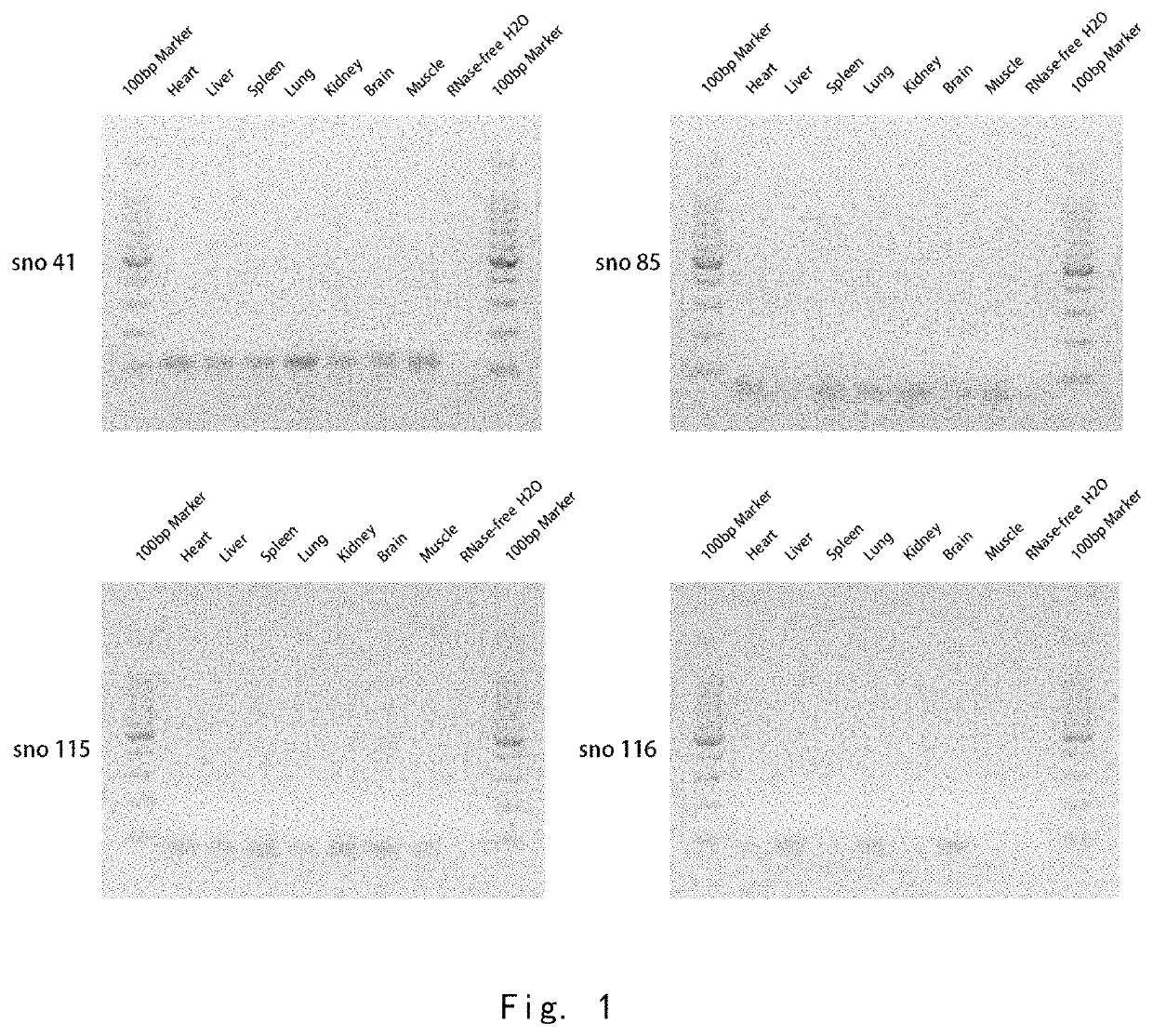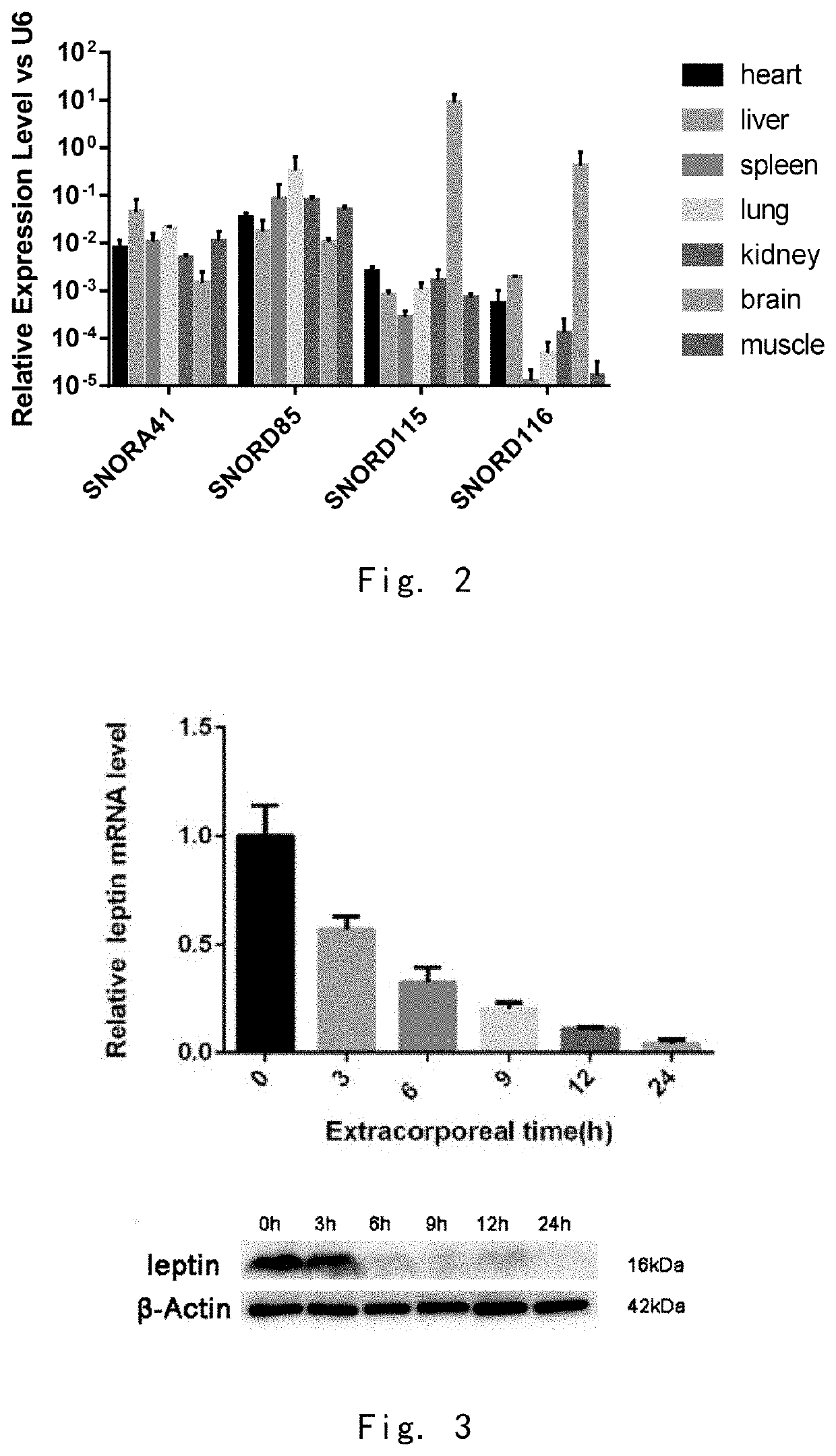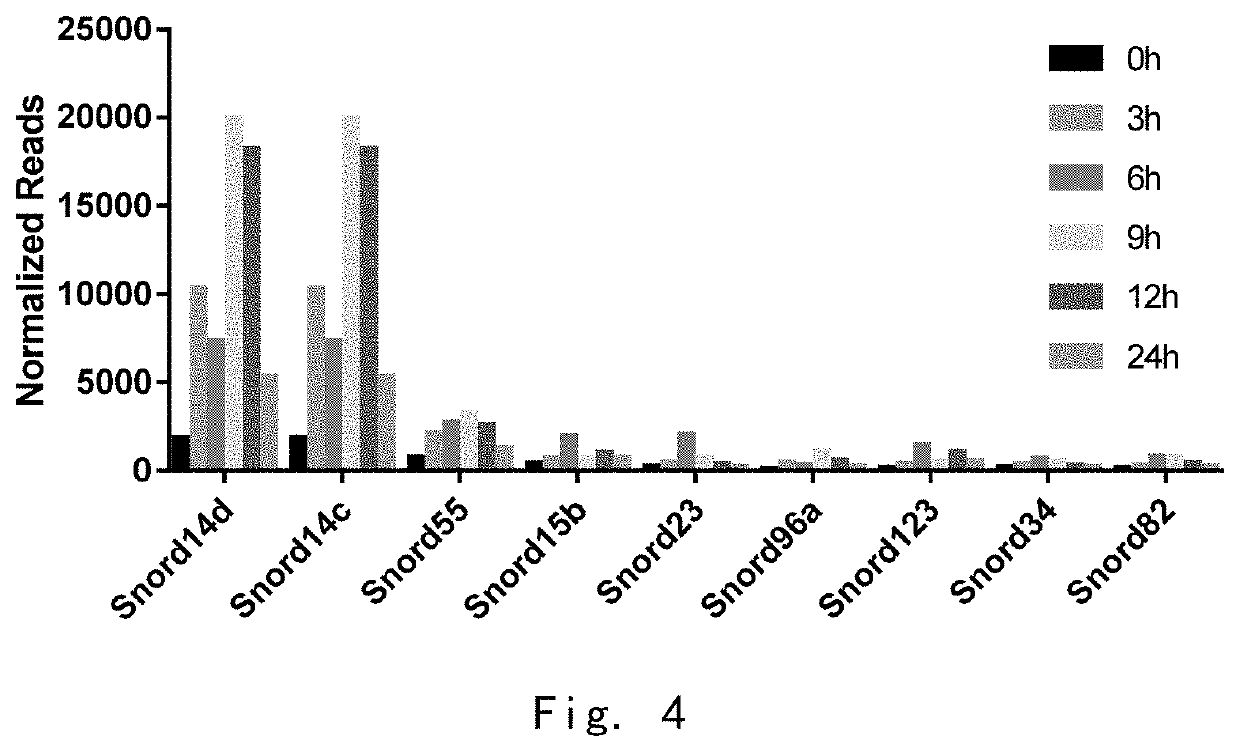Molecular marker detection and regulating methods in de-servitization state of cells
a molecular marker and cell technology, applied in the field of biotechnology, can solve the problems of no effective molecular marker to define the servitization state and de-servitization
- Summary
- Abstract
- Description
- Claims
- Application Information
AI Technical Summary
Benefits of technology
Problems solved by technology
Method used
Image
Examples
example 1
[0096]RT-PCR Experiment of snoRNA in Cells
[0097]In order to detect the specific changes of snoRNA in different cell servitization states, RT-PCR technology was used to detect snoRNA content in human and animal cells. The specific steps were as follows:
[0098](1) Collecting cells from humans or other animals;
[0099](2) Preparing cDNA samples. The total RNA of cells was extracted by TRIzol reagent, and then cDNA was obtained by RNA reverse transcription reaction. The reaction system of reverse transcription included 2 μl 5×AMV buffer, 1 μl dNTP mixture, 0.5 μl RNAase Inhibitor, 0.5 μl AMV enzyme, 1 μl gene-specific reverse primer, 1 μg total RNA and supplemented RNAase free water to a total volume of 10 μl. The reaction steps were incubation at 16° C. for 15 minutes, reaction at 42° C. for 1 hour and incubation at 85° C. for 5 minutes.
[0100](3) PCR electrophoresis and observation. 1 μl cDNA was taken from the previous reaction, 0.3 μl Taq enzyme, 0.4 μl dNTP mixture, 1.2 μl 25 mM MgCl2,...
example 2
[0102]Real-Time PCR Assay of snoRNA in Cells
[0103]In order to detect the specific changes of snoRNA in different cell servitization states, real-time PCR was used to detect the snoRNA content in human and animal cells. The experimental principle and procedure of Real-time PCR were the same as RT-PCR, the only difference was that the fluorescent dye Eva Green was added in PCR. The instrument used was ABI Prism 7300 fluorescence quantitative PCR instrument, and the reaction conditions were 95° C., 5 minutes for one cycle→95° C., 15 seconds, 60 degrees Celsius, 1 minute for 40 cycles. The data processing method was ΔΔ CT method, and CT was set as the number of cycles when the reaction reached the threshold, then the expression amount of each snoRNA relative to the standard internal reference can be expressed by equation 2−Δ CT, where Δ CT=CTSample-CTInternal reference.
[0104]The result was shown in FIG. 2. The inventors used Real-time PCR to detect the expression of all snoRNA of mouse ...
example 3
[0105]Detection of snoRNA Content in Adipose Tissue In Vitro after Different Culture Time by High-Throughput Sequencing
[0106]In order to detect whether snoRNA is differentially expressed in different cell states. The present inventors used a high-throughput sequencing method to detect snoRNA expression profiles of adipocytes at different time points after in vitro culture. The specific experimental steps were as follows:
[0107](1) Collecting white adipose tissue of mice in different states. After cutting into small pieces, the adipocytes were collected at 0, 3, 6, 9, 12 and 24 hours respectively to extract total RNA and total protein.
[0108](2) Isolating small RNA and establishing library. 18-30 nt RNA was separated from total RNA by PAGE electrophoresis gel cutting. 5-adenylated, 3-blocked single-stranded DNA linkers were used to link to the 3′ end of RNA. Digestive enzymes were added and the 3′ linker was removed. The 5′ linker was linked to the 5′ end of the product in the previous...
PUM
| Property | Measurement | Unit |
|---|---|---|
| volume | aaaaa | aaaaa |
| volume | aaaaa | aaaaa |
| volume | aaaaa | aaaaa |
Abstract
Description
Claims
Application Information
 Login to View More
Login to View More - R&D
- Intellectual Property
- Life Sciences
- Materials
- Tech Scout
- Unparalleled Data Quality
- Higher Quality Content
- 60% Fewer Hallucinations
Browse by: Latest US Patents, China's latest patents, Technical Efficacy Thesaurus, Application Domain, Technology Topic, Popular Technical Reports.
© 2025 PatSnap. All rights reserved.Legal|Privacy policy|Modern Slavery Act Transparency Statement|Sitemap|About US| Contact US: help@patsnap.com



